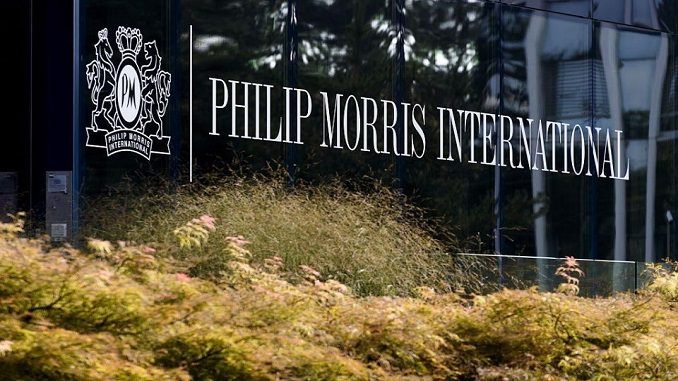
Shares of Philip Morris International Inc. (NYSE:PM) recorded -1.89% loss during trading session on December 4th, 2018. The script traded as low as $85.23 and last traded at $85.43. 5.2 million shares changed exchanged hands during trading, an increase of 11.19% from the 30-day average session volume of 5.85M shares, Financial Mercury informs.
The firm had previously closed at $87.08. The company has $1.56B outstanding shares, a price-to-earnings ratio of 16.04, price-to-earnings-growth ratio of 4.39and a beta of 0.64. The company has a RSI of 46.38, ATR of 1.90 and a volatility of 2.20% this week. PM has a 52 week low price of $76.21 and a 52 week high price of $111.25.
Investors have identified the tech company Philip Morris International Inc. as an interesting stock but before investments are made there, an in-depth look at its trading activities will have to be conducted. The share is trading with a market value of around 133.46B, the company now has both obstacles and catalysts that affect them and they came from their mode of operations. With the company affected by events currently, it is a perfect time to analyze the numbers behind the firm in order to come up with a rather realistic picture of what this stock is.
When analyzing a stock, the first fundamental thing to take into account is the balance sheet. How healthy the balance sheet of a company is will determine if the company will be able to carry out all its financial and non-financial obligations and also keep the faith of its investors. For PM, the company has in raw cash 5.88 billion on their books with 1.66 billion currently as liabilities. How the trend is over time is what investors should be concerned about. The company has a healthy balance sheet as their debt profile has been on a decline. In terms of their assets, the company currently has 0 total, with 30.88 billion as their total liabilities. This figure have given the company a good sense of viability under numerous contexts.
PM were able to record 0 as free cash flow during the third quarter of the year, this saw their quarterly net cash flow reduce by 1.1 billion. In cash movements, the company had a total of 0 as operating cash flow.
In order to determine the future investment potential for this stock, we will have to analyze key trends that affect it. During the third quarter of the year, Philip Morris International Inc. recorded a total of 20.44 billion in revenue. This figure implies that they witnessed a quarterly year/year change in their earnings with -0.01% coming in sequential stages and their sales for the third quarter reducing by -0.03%.
What matters though is how it ends. When the core data for the company is broken down, then the stock sounds interesting. The company spent 15.55 billion trying to sell their products during the last quarter, with the result yielding a gross income of 4.89 billion. This allows shareholders to hold on to 1.56B with the revenue now reading 1440 cents per share. This is a figure that is close to analyst’s prediction for their fourth quarter (1.07 cents a share).
Having a look at the company’s valuation, the company is expected to record 5.31 total earnings per share during the next fiscal year. It is very important though to remember that the importance of trend far outweighs that of outlook. This analysis has been great and getting further updates on PM sounds very interesting.

Be the first to comment